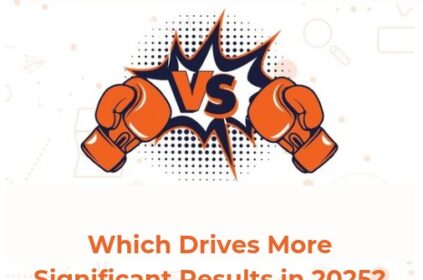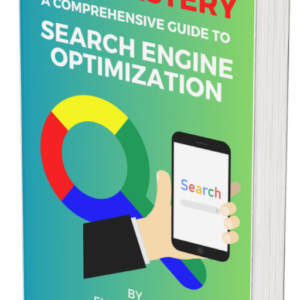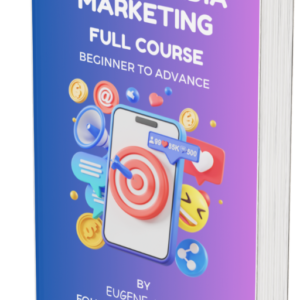In the chaotic, always-connected media universe of 2025, programmatic buying has moved from a clever efficiency hack to the default way brands secure attention.
Machine-learning bid models decide whether your banner, video, or connected-TV spot shows up in the fraction of a second it takes a page to load.
The stakes are high: CPM inflation, signal loss from privacy regulation, and an explosion of new inventory mean careless spending can drain budgets faster than ever.
To stay profitable, marketers are hungry for the best demand-side platforms for advertisers in 2025—tools built to turn bidding chaos into predictable growth.
Here, we’ll walk you through how today’s DSP stack works, and also compare the field’s front-runners and show you how to squeeze competitive advantage from them.
Why 2025 Has Changed the Programmatic Game
Cookie deprecation is now a reality in Chrome, and the resulting identity vacuum has split audiences into three buckets: authenticated, probabilistically matched, and completely anonymous.
DSPs that survive this shake-out have rebuilt their pipes around clean-room partnerships, first-party data ingestion, and AI that no longer depends on a single identifier.
That’s why marketers focused on growth keep scanning the market for the best demand-side platforms for advertisers in 2025 capable of resolving users across screens without breaching privacy rules.
At the same time, supply is fragmenting in the opposite direction. Streaming services have opened programmatic lanes to what was once direct-sold inventory; digital out-of-home screens in airports now accept real-time bids; and immersive mobile gaming exchanges report double-digit volume gains.
The result is both opportunity and trap. Brands armed with the best demand-side platforms for advertisers in 2025 can craft omnichannel frequency curves that maximize reach without blowing caps.
Brands that cling to single-channel point solutions will watch costs swell while outcomes flat-line.
How Modern DSPs Actually Work
Every DSP plugs into multiple supply-side platforms (SSPs) and exchanges. When a user launches an app or visits a site, the publisher’s SSP fires a bid request packed with device, geo, and contextual signals.
The DSP’s bidder checks your campaign rules, consults a predictive model for conversion probability, then decides whether to bid—all in about 100 milliseconds.
This real-time handshake answers what many quietly Google: How do demand-side platforms work?
Because decisions arrive instantly, training data is the lifeblood of performance. The best demand-side platforms for advertisers in 2025 feed on a mix of first-party CRM data, retail-media graphs, and probabilistic IDs derived from device behavior.
They expose these inputs so your data science team can audit lift models instead of trusting a black box.
The role of a DSP in advertising is therefore two-fold: automate bid execution and surface transparent analytics.
When you review site-level viewability or cost per completed view for CTV, that’s the DSP’s log files stitched into a dashboard.
Advertisers who grasp this flow troubleshoot under-delivering line items the way engineers track packet loss.
Display, Video, CTV, Audio, DOOH
Back in 2015, running a DSP meant plain-vanilla banners. Fast-forward to 2025 and the palette is broader.
Video rules mobile feeds, while long-form streaming competes for living-room eyes. Audio ad inventory from podcasts and smart speakers keeps rising.
Even billboards are no longer static JPEGs; digital panels sync to weather triggers pulled from the same decision tree steering your pre-roll.
Channel depth is another reason brands shortlist the best demand-side platforms for advertisers in 2025. If a DSP lacks programmatic-guaranteed deals for connected TV, reach curves flatten before hitting scale.
A bidder without audio optimization loses multitasking commuters. A unified platform lets you set one budget but ride multiple waves of intent as consumers hop devices.
DSP vs SSP
A common late-night search—DSP vs SSP—boils down to brokerage roles. A supply-side platform represents publishers; a demand-side platform represents advertisers.
They meet in an exchange where the highest eligible bid wins. The best demand-side platforms for advertisers in 2025 maintain hundreds of pipes into SSPs yet never own the inventory, preserving objective auction mechanics.
Is Google Ads a demand-side platform? Not exactly. Search and YouTube inventory trade inside Google’s walled garden, so the UI looks like a DSP, but the pipes resemble an SSP-exchange hybrid.
Google Display & Video 360, on the other hand, does function as a DSP because it bids across multiple external exchanges—an important distinction when you compare brand-safety tooling and scale.
Separating Hype from Practical Benefit
With more than seventy viable options, declaring the best demand-side platforms for advertisers in 2025 requires a scorecard:
#1. Identity Resolution: Does the platform accept hashed emails, UID2, and publisher first-party IDs? Cross-device accuracy protects frequency management as cookies vanish.
#2. Omnichannel Depth: Feature parity across display, video, CTV, audio, and DOOH enables consolidated reports reflecting real customer journeys.
#3. Transparency: Log-level data access, bid-stream raw files, and auction diagnostics separate professional-grade DSPs from vendor-locked gardens.
#4. Brand-Safety Guardrails: Built-in pre-bid filters, third-party verification tags, and real-time exclusion lists insulate creative from disinformation.
#5. Optimization AI: Custom algorithm marketplaces let you plug your model into the bidding engine. The best demand-side platforms for advertisers in 2025 treat data scientists as first-class citizens.
6. Service Layer: Decide whether you need self-serve control or white-glove trading support before signing.
Spotlight on the Leaders
Below is a narrative rundown of vendors that appear in RFPs whenever brands hunt for the best demand-side platforms for advertisers in 2025.
#1. The Trade Desk: Famous for log-level transparency and UID2 adoption, it ingests millions of signals per second through its Koa AI engine.
#2. Amazon DSP: Retail intent data fuels mid- and lower-funnel success. Fire TV integration unlocks CTV reach, and Sponsored Display extends to third-party sites.
#3. Google Display & Video 360: Deep YouTube integration plus exchange access, though some brands critique opaque auction mechanics.
#4. MediaMath: Rebuilt on privacy-by-design, partnering with clean-rooms for secure data overlaps and incremental-lift bidding.
#5. Adform FLOW: End-to-end stack—SSP, DMP, and DSP—aligned with stringent GDPR consent protocols, popular in Europe.
#6. StackAdapt: Mid-market challenger leaning on contextual AI that clusters pages by semantic meaning after cookie loss.

#7. Yahoo DSP: Premium sports and finance supply deals plus dynamic creative optimization.
#8. Basis Technologies: Workflow automation married to a demand-side engine, saving agencies hours on IO approvals and billing.
Each contender positions itself as one of the best demand-side platforms for advertisers in 2025, yet fit is contextual.
A CPG giant craving CTV scale may favor The Trade Desk, while a DTC brand obsessed with cart-level attribution might choose Amazon DSP.
Campaign Setup: From Zero to First Impression
Launching inside one of the best demand-side platforms for advertisers in 2025 feels less like buying media and more like configuring software:
#.1 Seed Data. Upload hashed CRM emails or connect your CDP stream.
#2. Define KPI. Pick a single metric—incremental reach, CPA, or cost per completed view.
#3. Build Audiences. Blend first-party, contextual, and modeled segments.
#4. Set Bids. Choose dynamic CPM with a cap or target CPA bidding.
#5. Guardrail Safety. Enable pre-bid blocks for IVT, hate speech, or sensitive news.
#6. Launch & Monitor. If win rate dips below five percent, raise bids or widen targeting.
Many marketers still hunt for “how to use demand-side platforms for ads PDF” guides, but static PDFs age fast.
Console walk-through videos stay current, yet knowing the sequence above lets you troubleshoot creative approvals or throttled inventory.
Optimization Loops That Win in 2025
Once campaigns mature, decision loops kick in:
#1. Creative Rotation. Algorithms test thumbnails, headlines, and CTAs; retire variants below median CTR.
#2. Supply-Path Pruning. Auction logs reveal pricey routes; redirect budget to cleaner pipes.
#3. Daypart & Geo. The best demand-side platforms for advertisers in 2025 surface heat maps; push bid multipliers during peak conversion windows.
#4. Incrementality Testing. Ghost-ad or PSA controls prove true lift, insulating you from attribution illusion.
One apparel brand dropped effective CPA 27 % after pruning five high-latency supply paths and reallocating budget to guaranteed CTV deals with viewability floors.
Future-Proofing Your Programmatic Stack
Three tectonic shifts will define the next twelve months.
First, the OpenRTB consortium ships its Privacy Sandbox compatibility layer. When Chrome erases third-party cookies, only the best demand-side platforms for advertisers in 2025 will turn those new tokens into usable look-alikes without a performance dip.
Second, generative AI is moving inside the bidder. By Q4, creative variations will be generated on the fly, scored for predicted lift, and discarded if they don’t outperform controls—no human versioning required.
Third, contextual signals are graduating from keyword density to multimodal comprehension. DSPs already test image-based object detection within display placements to match brand mood with on-screen content.
Another horizon feature is attention metrics. Instead of proxying success through clicks, smart-TV cameras and AR eye-tracking sensors will feed aggregate gaze data back to exchanges.
Expect the best demand-side platforms for advertisers in 2025 to optimize bids based on predicted seconds of active attention, not just viewability.
Brands that rewrite creative to hold gaze longer will watch cost per attentive second plummet—a metric investors increasingly reference on earnings calls.
Action Checklist
Use this roadmap to squeeze ROI from the best demand-side platforms for advertisers in 2025:
#1. Audit your first-party data and map gaps.
#2. Shortlist three providers and request sandbox access.
#3. Run a 48-hour smoke test with $1k per channel.
#4. Compare log-level transparency and identity match rates.
#5. Deploy creative with at least four headline variants per persona.
#6. Schedule weekly supply-path reviews to cut hidden fees.
#7. Establish an incrementality-testing cadence every quarter.
Follow these steps, keep experimenting, and the best demand-side platforms for advertisers in 2025 will evolve from a line item in your media budget to a compounding growth engine that scales with your ambition.
Conclusion
Remember that excellence in programmatic buying is less about mastering obscure levers and more about disciplined iteration.
Document every hypothesis, track each outcome, and feed those learnings back into your bidder. With rigor and patience, sophisticated automation stops feeling scary and starts compounding the impact of every storytelling idea you push into the market—consistently profitably.










